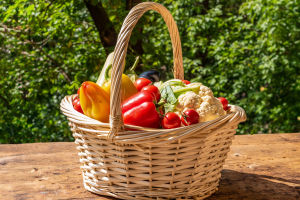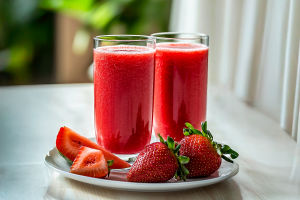Lykkers, have you ever wondered when pears reach their peak sweetness? Knowing the right season not only helps us enjoy the juiciest, most flavorful pears but also ensures we get the best nutrition.
Pears don’t all ripen at the same time, so understanding the differences between varieties is key to enjoying them at their best.
The pear season is a special time of year when markets and fruit stalls are filled with these sweet, crisp fruits. By paying attention to the ripening schedule, we can make sure every bite is at its peak flavor. It’s more than just a snack—it’s a way to enjoy a refreshing, naturally sweet treat that’s perfect for sharing.
Early, Mid, and Late Varieties
Generally, pears ripen in summer and autumn, but exact timing depends on the variety and location. Common varieties include:
- Early-ripening pears: Varieties like Green Gem and Bartlett usually mature between July and August. These pears are sweet, delicate, and perfect for cooling down on a hot summer day.
- Mid-season pears: Varieties such as Snow pears and Bosc pears ripen around August to September. These are crisp, large, and ideal for fresh eating or making pear juice, jams, or syrups.
- Late-ripening pears: Varieties like Comice and Winter pears ripen later, typically from September to October or beyond. These pears store well and can be enjoyed throughout winter, making them a reliable choice for long-term enjoyment.
Understanding these differences allows us to plan purchases and ensures we can enjoy each variety at the right moment. We can even mix different pears to create seasonal platters that highlight their unique textures and flavors.
Why Ripening Times Differ
Pear ripening varies due to a few key factors:
1. Variety traits: Each type of pear grows and develops at its own pace, so harvest times differ naturally.
2. Climate conditions: Sunlight, temperature, and rainfall all affect growth. Warm, humid regions see earlier ripening, while cooler, drier regions may have delayed harvests.
3. Farming practices: Proper fertilizing, irrigation, pruning, and pest management can help pears grow and ripen evenly. Poor management can delay ripening or reduce fruit quality.
Even small differences in these factors can result in a noticeable shift in peak flavor. That’s why we might find the same pear variety available earlier in one region than another. By knowing these factors, we can choose the best sources for the season.
How to Pick the Best Pears
Once we know the ripening season, it’s time to choose the tastiest ones. Here are a few simple tips:
- Check the appearance: Look for smooth skin with no visible blemishes or disease. Bright, fresh colors usually indicate ripeness.
- Feel the texture: Gently press the pear; a slightly soft, elastic feel signals the fruit is ready to eat.
- Smell the aroma: Ripe pears emit a mild, sweet fragrance. A stronger scent often means higher quality.
By combining these senses—sight, touch, and smell—we can select pears that are not only delicious but also full of nutrients. It’s almost like a mini treasure hunt at the market, and it makes the eating experience even more satisfying.
New Varieties and Farming Techniques
Agricultural innovation is changing pear availability. Techniques like greenhouse growing, grafting, and controlled irrigation allow farmers to adjust ripening times, giving us access to pears earlier or later than traditional seasons.
New varieties are also emerging, such as red-skinned pears rich in antioxidants or oddly-shaped pears with unique flavors and textures. Some are juicier, some crunchier, and some have a natural sweetness that’s perfect for desserts. With so many options, we can explore and enjoy pears in more ways than ever before.
Enjoy Pears at Their Peak
Eating pears at the right time maximizes flavor and nutrition. Planning purchases and consumption according to the season ensures we enjoy the sweetest, juiciest fruit while getting all the benefits they offer.
We can slice them for salads, bake them into tarts, blend them into smoothies, or simply enjoy them fresh. By knowing the variety and timing, we can savor pears at their absolute best, whether as a simple snack or a special addition to our meals.
Sweet Moments with Pears
Lykkers, pears aren’t just a tasty snack—they’re a seasonal treat worth anticipating. By understanding different varieties, observing ripening cues, and trying new types, we can make every pear experience enjoyable and memorable. So let’s embrace the pear season and savor every juicy bite together!


